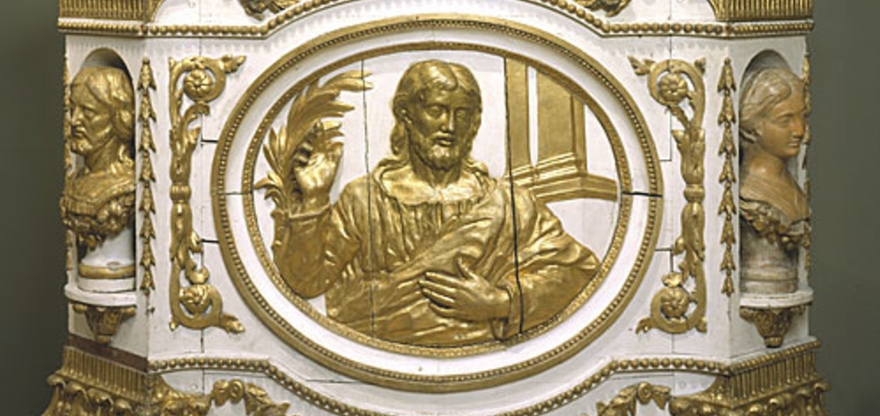For thousands of years before the arrival of the French, a wide array of cultures existed on the territory of what is now Québec, and the fate of the Aboriginal peoples living on that territory is reflected in the history of the collection of the Musée national des beaux-arts du Québec. Colonial culture became the reference of choice some 500 years ago and our collection was built with New France as its point of departure.
This room relates how various art practices emerged in the 17th century, a period dominated mainly by the importation of art works from France. The first art to cross the Atlantic was small in scale because it was easier to transport than larger pieces. It served a variety of devotional and trade purposes. The creation of permanent colonial institutions eventually stimulated artistic production, most of it of a religious nature, while the first commissioned works were almost exclusively intended to meet decorative needs. Between the early 18th century and the Conquest of 1759, New France became an autonomous source of sculpture, gold and silver artifacts and embroidery. Meanwhile, paintings continued to come primarily from the metropolis even though a significant trend in votive works was beginning to take shape in the colony. The colony’s isolation during the post-Conquest period (1760-1790) led, necessarily, to greater development in the arts. Religious paintings and portraits, which were very much sought after, were produced by both immigrant artists and the first artists to be born on colonial soil, although they too were trained in Europe.
The Desjardins Paintings
This room also presents the Fonds Desjardins. Forced by the Revolution to flee France, the brothers Philippe-Jean-Louis and Louis-Joseph Desjardins, both clergymen, immigrated to Lower Canada in the mid-1790s. Although the colony boasted many churches, Philippe-Jean-Louis soon realized that they were sorely lacking in devotional paintings and that there were insufficient resident artists to meet the need. Returning to France, he purchased dozens of religious paintings from among those flooding the market after being seized from the Church during the Revolution. In 1817 he sent a first shipment of 120 canvases to Québec City, which, after numerous vicissitudes, were eventually received by his brother, who had remained in Lower Canada. These works by French artists of the seventeenth and eighteenth centuries would be disseminated throughout the colony’s parishes and much copied by local artists, who used them to perfect and promote their own art.






Give us your feedback